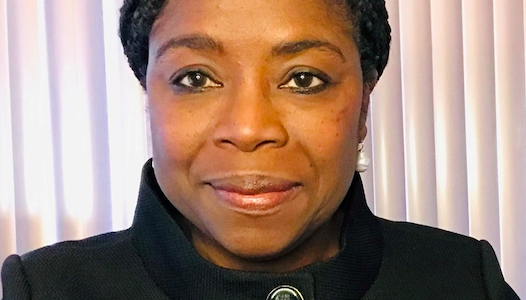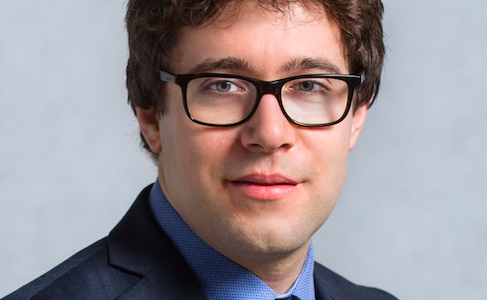by Michel Klompmaker
Economic crime scholarship presents an organisation as a double-edged sword. On the one hand, organisations are cheated by their employees, discriminated by corrupt public officials, and face cyberattacks, whereas on the other hand, organisations evade taxes, defraud their customers, and cheat competitors. While fraud, corruption and other forms of economic crime cause immense losses to individual organisations as well to society, many of those crimes are committed by organisations themselves. On Thursday, February 4, 2021 the 2nd Winter Economic Crime Symposium – Organizations: Beyond Victims and Perpetrators was held online by the Centre for Counter-Fraud Studies at the University of Portsmouth. The event sought to explore the network of relationships inside and between organisations and how it should not be reduced to two groups, victims and perpetrators. With a theme focused on economic crime, several professionals gave keynote presentations on a range of topics from brand protection, corruption, corporate compliance, foreign bribery, and intellectual property (IP) crime. The Risk & Compliance Platform Europe was also a media partner and covered the event via its website. This is the final part.
What research and practice on brand protection shows
Jeremy M. Wilson’s (Professor of the School of Criminal Justice at Michigan State University) presentation linked to Dr. David Shephard’s talk on intellectual property crime. What Professor Jeremy Wilson’s presentation focused on is what firms’ brands can do to protect themselves and consumers from these fraudulent behaviours of product counterfeiting. He started out by stating how there was no one leading the intellectual fight against IP crime, so Michigan State University began to invest in leading this fight. He noted that throughout the process, virtually every brand and product is at risk. He also said that what we notice time and time again is that companies cannot solely rely on law enforcement. They tend to have scarce resources and their awareness is often low on these issues compared to other areas.
In his research, Professor Jeremy Wilson discovered that typical brand protection programs in companies, if they exist at all, tend to be weak, minimal and reactive. He stated how some companies think: ‘we didn’t make these counterfeit products, they’re not ours and so we don’t have to deal with them’, etc. But there are other companies out there that are very aggressive in fighting counterfeits. He stated that typical brand protection programs are largely enforcement driven. From a company perspective, as he explained, firms derive a large portion of their value from their reputation. He also suggested that most risk indicators show that this is a growing problem and that the risk is multidimensional. It’s not only a risk from a health and safety viewpoint, but also to industry as well as it affects their reputation and sales. Governments also have to invest to enforce laws on the illicit trade activity using tax revenue, which also affects jobs and the economy.
He said that generally, recognising the counterfeit problem is the first step companies need to make. Companies need to take this step of acknowledging that there is an issue, that they are susceptible to the risk of counterfeiting and that they need to start analysing it. What he also found in his research is that most companies’ actions towards addressing the product counterfeiting risk tended to be very reactive. He explained that they would typically identify a counterfeit that’s on the market and then take some kind of enforcement action. The companies would wait until the next issue is identified and then repeat the process again. He said that this reactive process from companies is something he generally observed in his research, but that the goal is to make the reaction component a much smaller portion of the brand protection process.
He then discussed how brands can also be a victim of counterfeiting without even doing anything out on their own. They can have a good secure supply chain and still have a counterfeit product end up on their shelves without any assistance from the brand themselves or their partners. So, in this sense, they can still end up being victims. He also underscored how it’s very difficult for brands to quantify the problem and truly understand how large the problem and risk is, and to address the risk.
Key issues that emerge from a firm perspective
Professor Jeremy Wilson then went into the key questions that emerge for firms, one being: what does a total business solution look like? If the reactive measures aren’t the most effective, what can firms then do to have a comprehensive program? What can firms do beyond just enforcement to protect themselves? He stated that we can’t rely solely on law enforcement to do this on their own. So, how can firms adopt a proactive approach? What data do companies need? How much do they need? And how do they use it and analyse it? And what parts of the company matter? This is a supply chain, security and legal issue, but are they truly the only ones involved? Are there others, and what can they do to facilitate brand protection?
Opportunity crime
Professor Jeremy Wilson believes that one of the best approaches to look at product counterfeiting is from an opportunity perspective. One of the theories he discussed related to opportunity is the routine activity theory, which states that crime is a function of opportunity. By examining the opportunities that give rise to crime, we can examine ways to help reduce and prevent crimes from occurring. Situational crime prevention is another concept, and it helps to reduce the opportunities for crime. It provides five broad ways to do that. Opportunities to crime can reduced by making it harder for offenders to carry out the criminal acts, by increasing the risk of getting caught or apprehended, by reducing the expectant rewards from the criminal acts and finally by reducing things that give offenders excuses for the criminal activity.
He then spoke about the macro and micro influences from this type of opportunity crime, which varies on time, place and product. He stated that there are differences in terms of the likelihood of counterfeiting based on the demand for products. He gave some examples here such as life-saving drugs that have a high demand. We can also think of consumerism and that there are some brands that people really want for social status. So, he stated that elements of demand create a desire for products, which really helps to increase the opportunity for the crime and for consumers and fraudsters to engage in criminal activities.
Professor Jeremy Wilson also took globalisation into account and highlighted how distribution channels are much more effective now than they were decades ago. The demand that arises in one part of the world can be easily met by the supply in another part of the world. So, globalisation matters and very much plays a role. Technology is also interesting as he stated because it helps to increase the risk of counterfeiting, but also helps to potentially reduce it. Opportunities for counterfeiting are created via the internet and online platforms, which creates a lot of risk because of increased communication, anonymous actors, 3D printing, track and trace technology, blockchain, etc. So, there is an incentive for people to get involved, but at the same time as he pointed out, the risk is low and the chance of getting caught is low. The penalty is also low if the offenders get caught. Opportunities are also created by the different ways that people can enter the market such as via sales platforms, interested consumers, etc.
In terms of awareness, he observed how law enforcement, consumers, industry, etc have various levels of awareness of counterfeiting and that oftentimes it is very low. He stated that it feeds into the notion that consumers aren’t thinking of being victimised and that law enforcement aren’t thinking about identifying these activities when they occur, which plays into the minds of counterfeiters. When we look at the risk for companies, small and large companies are at risk and the affects can really be devastating to their business, as he stated. For large companies, they have many suppliers and many supply chains, so the risk is quite high for them.
The notion of a total business solution
Professor Jeremy Wilson then spoke about the basic elements of a total business solution. First, he stated that it’s important to identify the counterfeiter, the unseen competitor. Most companies do a lot of research on their legitimate competitors. They know their products, prices, market shares, promotion, etc. The idea, as he maintained here, is that companies need to start thinking about researching the counterfeiters because they are competing against the counterfeiter. The counterfeiter is using the company’s own ID against them, so companies as he said need to understand how the counterfeiters are doing that and how they are getting access to materials, labels and other production processes. He also stated that companies need to emphasise prevention and proactivity.
As he mentioned, many of the brand protection programs are reactive, but the most cost-effective approach it to put together programs that are preventative and proactive. One of the best ways to drive proactivity is to draw on data and analysis to assess and mitigate the risks. Companies really have to start thinking about the information they are collecting, what they are doing with it and how it can help form their strategy. They can do so by implementing controls of risk scenarios to detect problems when they appear. A fifth element is to promote a holistic approach that coordinates all parts of the firm, is forward looking and preventative. The final element that he mentioned is that firms need to create a culture of continuous improvement. Companies need to essentially become learning organisations, as he explained. They need to both figure out what’s working with their processes and what’s not working.
Conclusion
Professor Jeremy Wilson stated that they found that the ideal brand protection program is proactive, strategic, comprehensive and data driven. They also found a need for prevention and analysis and a need for communication and networking. He also noted how virtually every major function of the firm played a role and that every part needs to be coordinated in a comprehensive response. The importance of a layered approach to a brand protection program is to ensure that you don’t leave vulnerabilities in the overall approach.






